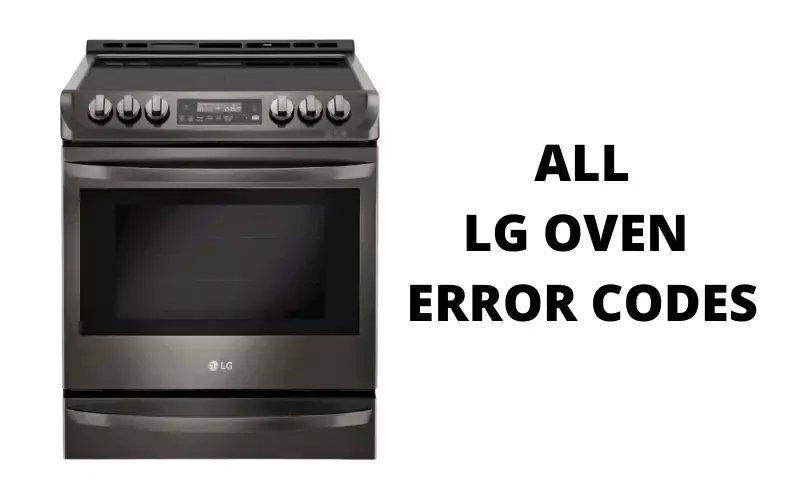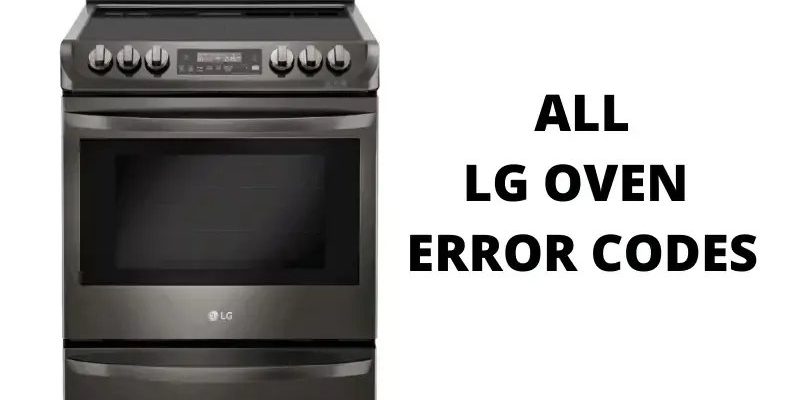
Let’s break it down: the error code E3 in LG ovens and ranges typically indicates an issue with the temperature sensor, which plays a crucial role in making sure your oven heats to the right temperature. Think of it like your oven’s internal thermostat. If your home’s thermostat was on the fritz, you might feel too hot or too cold. Similarly, if the oven’s temperature sensor isn’t working properly, your cooking results could be unpredictable, or worse, your oven might become unsafe.
So what does this error mean for you and your culinary adventures? While it might not sound like an emergency, it’s crucial to understand the implications and what steps you should take next. Safety first, right? Let’s dive into what error code E3 means, why it happens, and what you should do about it.
Understanding Error Code E3 on Your LG Oven
When you see that E3 code, your LG oven is essentially waving a red flag, saying, “Hey, I’ve got a problem!” Specifically, this code is linked to the oven’s temperature sensor, which is essential for maintaining the correct cooking temperature. Imagine trying to bake a cake without knowing how hot your oven is — it’s a recipe for disaster! In many cases, the temperature sensor might be malfunctioning or has become dislodged, sending inaccurate readings to your oven’s control board.
You might wonder, what’s the big deal if the temperature sensor is off? Well, consider this: if your oven registers the wrong temperature, it could potentially heat up more than it should. This overheating can pose a risk not only to your food but to you and your kitchen. No one wants to deal with charred meals or, even worse, a safety hazard.
Another reason why the E3 error might pop up involves wiring issues. Wires connecting the sensor to the control board might be loose or damaged, causing intermittent or inaccurate signals. Think of it as trying to make a phone call with a bad connection. What do you do? You check the wires or connections, of course! This can be a similar approach to tackling your error code issue.
Steps to Take When You See Error Code E3
So, you’ve spotted the E3 and are wondering what to do next. First things first: stay calm. There’s no immediate danger, but it’s important to address the issue sooner rather than later. Begin by turning off the oven and letting it cool completely. It’s like giving it a little break to reset itself — sometimes this simple step might clear up minor glitches.
Next, consider checking the temperature sensor if you’re comfortable doing so. This might involve examining the connections to ensure they’re secure. Remember, the sensor is the brain of your oven’s temperature regulation. If it’s not functioning correctly, it’s like trying to drive with a frosted windshield.
However, if you’re not confident in handling these components, it might be best to consult the manual or reach out to a professional technician. They’ll be able to diagnose the issue and determine if the sensor needs recalibration or replacement. It’s a bit like going to the doctor for a sprained ankle — sometimes expert advice is the quickest route to recovery.
Preventative Tips and Final Thoughts
To avoid similar hiccups in the future, regular maintenance of your LG oven can be a game-changer. That means cleaning your oven periodically and checking for any signs of wear and tear on the electronic components. Think of it as giving your kitchen companion a regular check-up to keep it running smoothly.
In the meantime, while you wait for a fix, you might want to avoid using the oven until the issue is resolved. Safety should always be your priority, and cooking can always resume once you’re sure everything’s in working order. It’s like waiting to use a car until the brakes are fixed — a little patience goes a long way toward ensuring safety.
In conclusion, while an E3 error code isn’t necessarily a red alert, it’s a sign that your oven needs a little TLC before you continue your cooking adventures. By understanding what this code means, you can take the right steps to fix the issue and maintain safety all around. Remember, when in doubt, it’s always wise to consult with a professional. Safe cooking!
